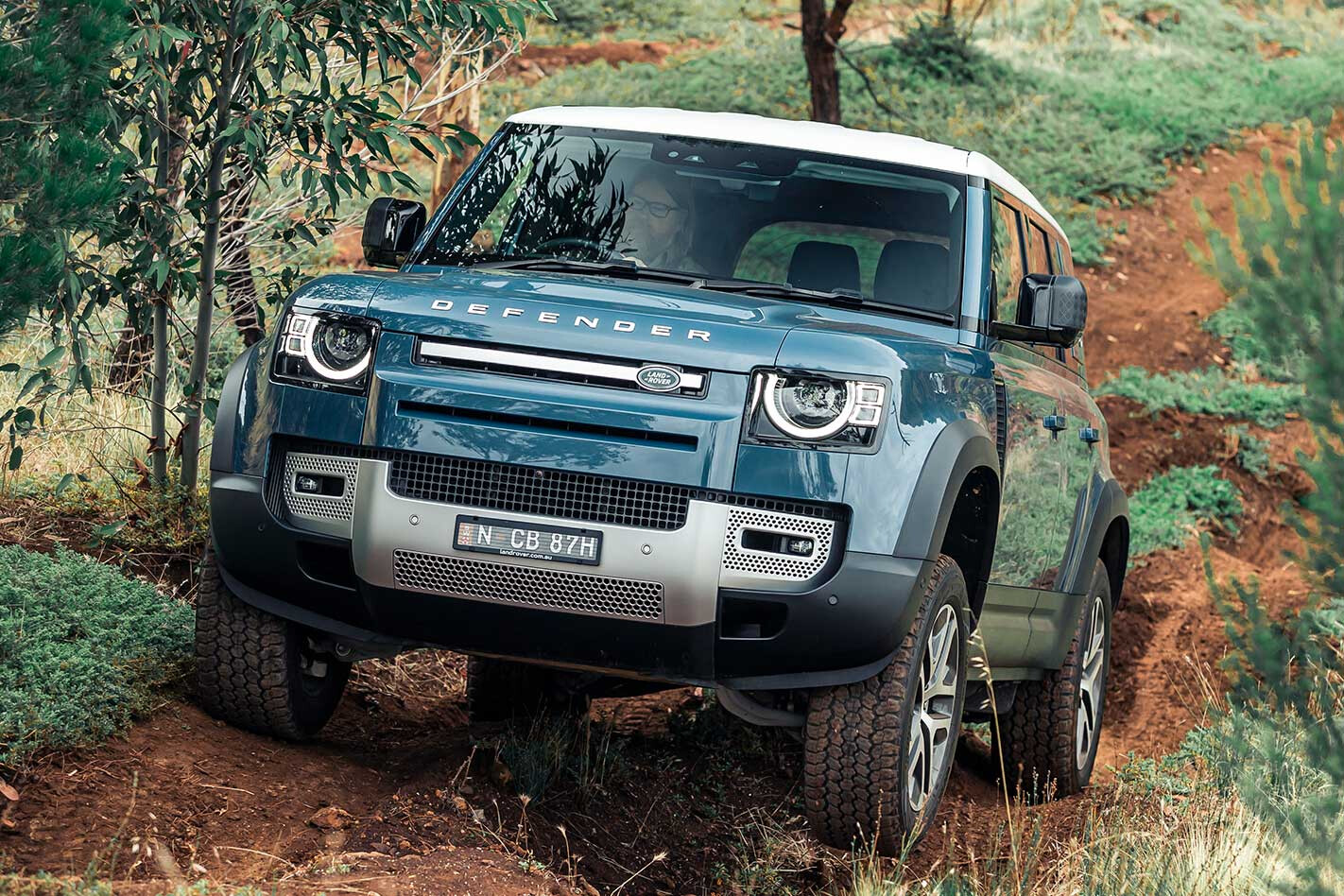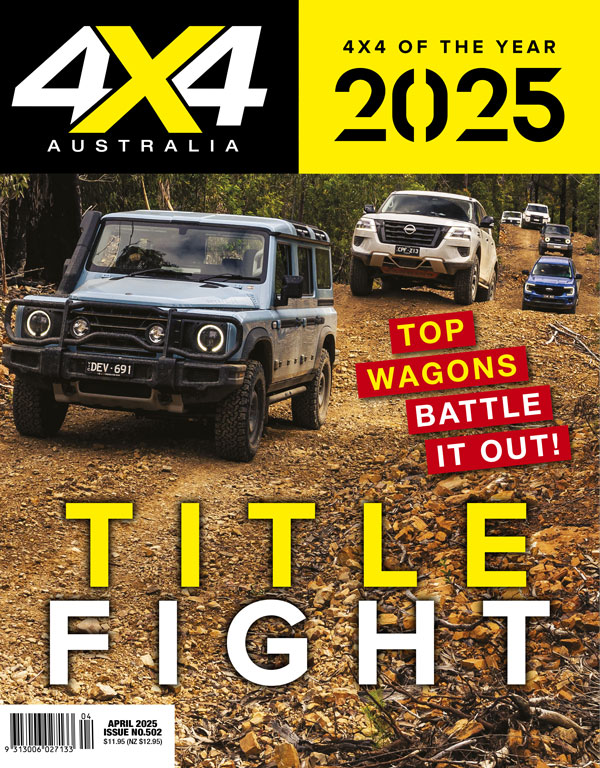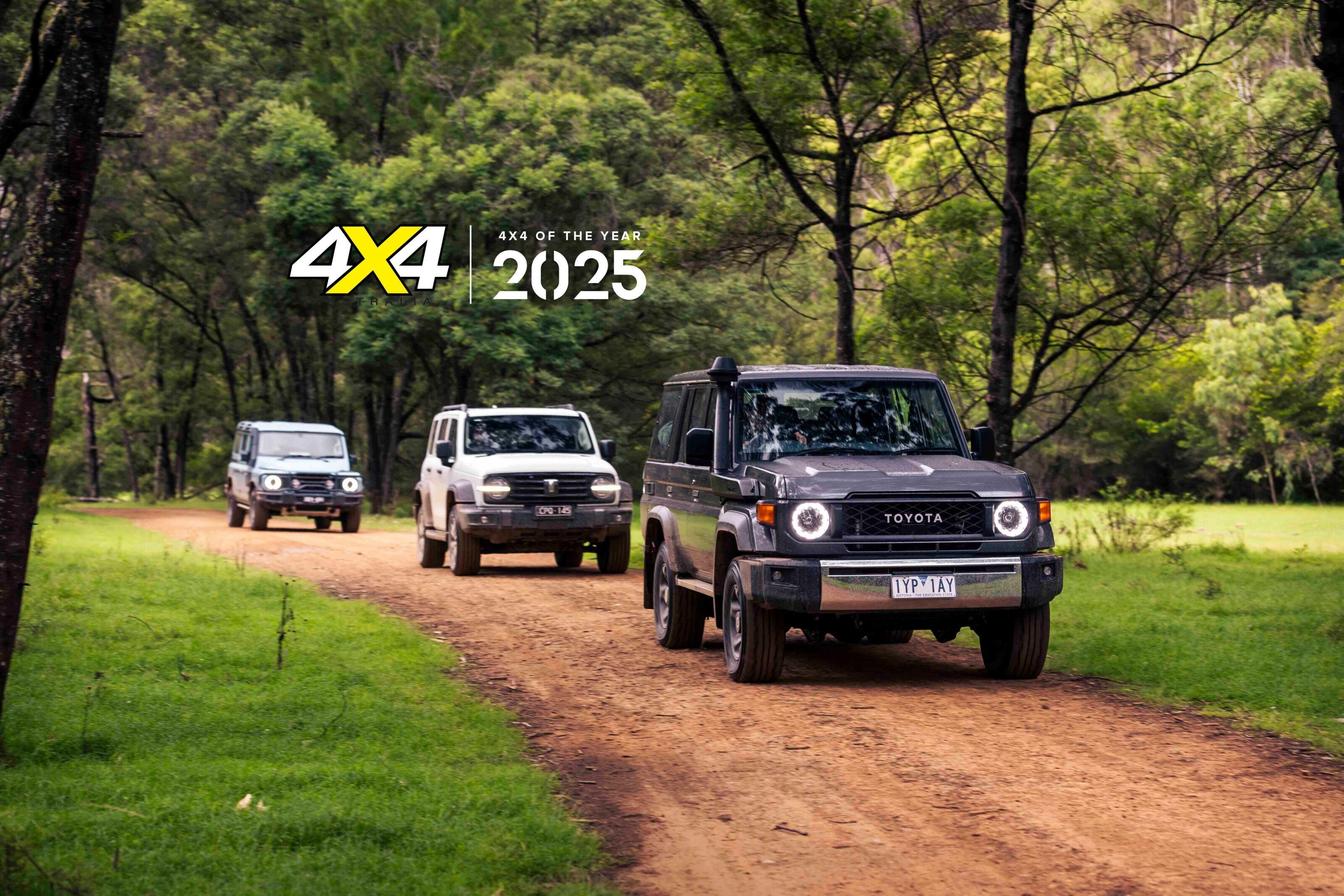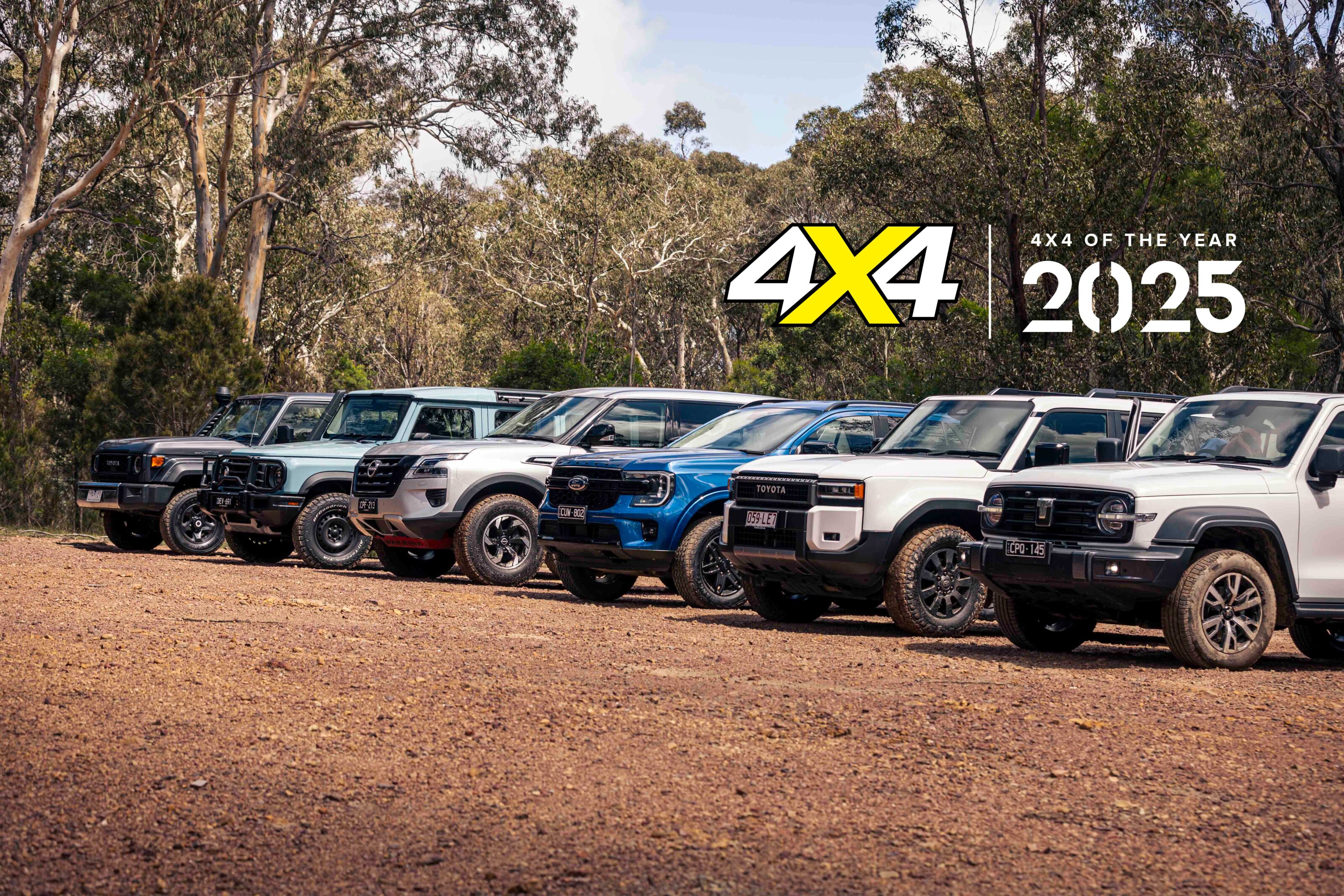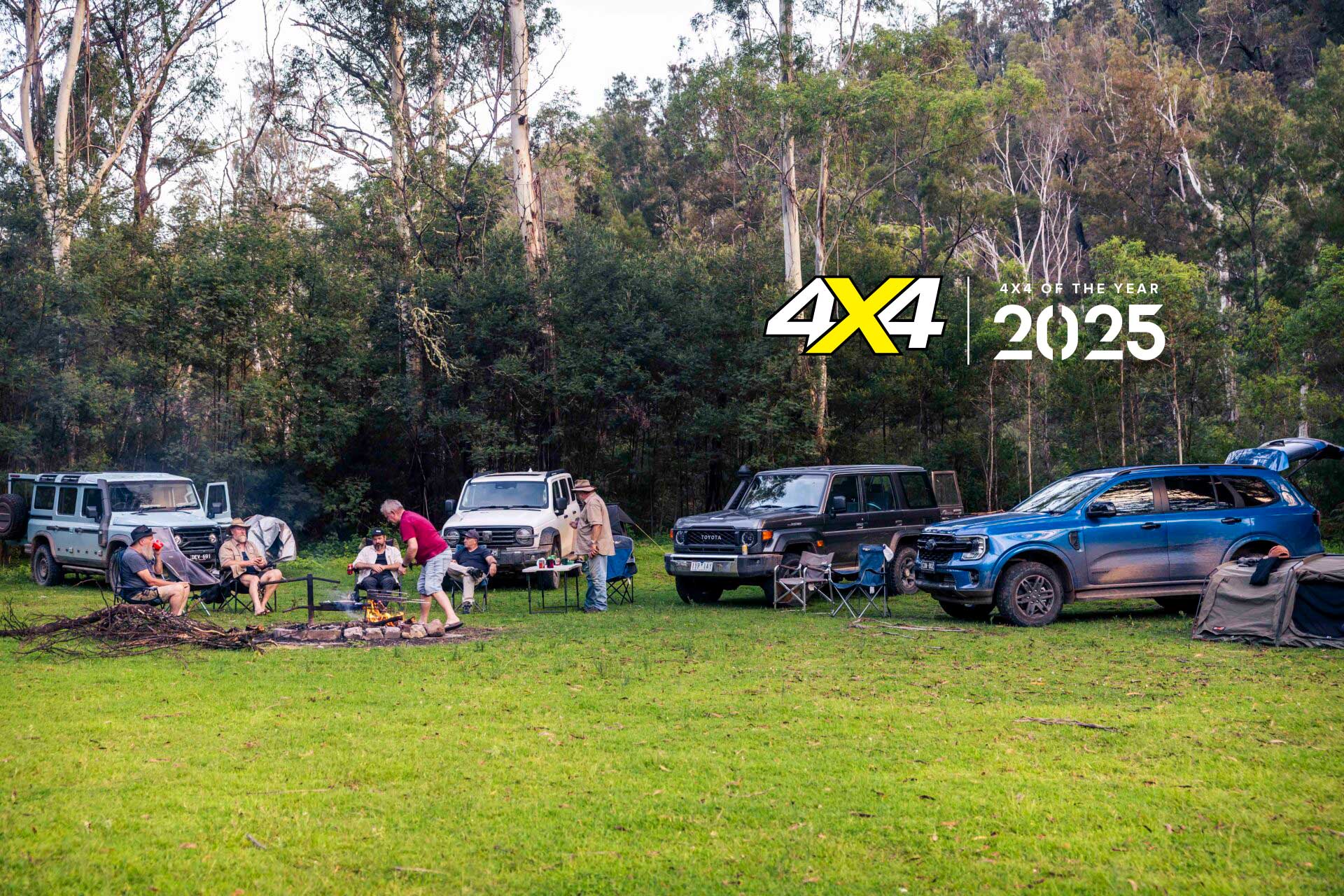WOW! Where do you start with the new Land Rover Defender? When we say the Defender is all-new, we mean it. It’s new from the concept forward and the only carry-over part on it is the model name.
4X4OTY CONTENDERS 2021 ISUZU D-MAX MAZDA BT-50 XTR TOYOTA HILUX SR5+ JEEP GLADIATOR RUBICON
The 2020 Defender arrived in very limited numbers of 110 5-door wagons and most of them were the P400 petrol model. In fact the few 4-cylinder diesel variants have since been discontinued and will be replaced with a new 6-cylinder diesel from April, along with the arrival of the 3-door Defender 90.
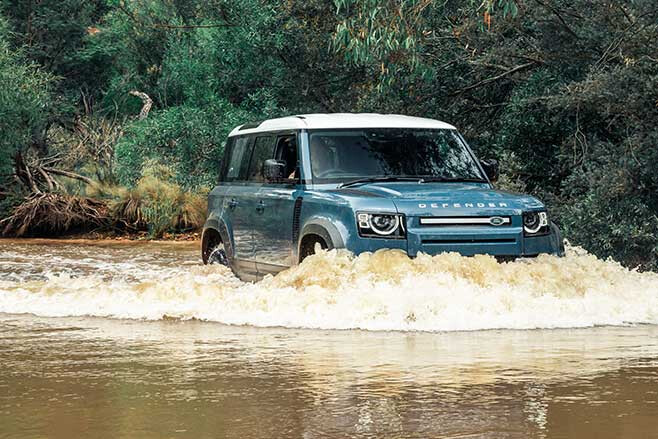
The Defender supplied for 4x4OTY is an SE-spec P400 which starts at $102,736 but with a heap of option packs fitted, this one comes in at $126,917. While we would consider most of the options non-essentials, the few worthy of mention include the Towing Pack ($3207) which gets you: All Terrain Progress Control (ATPC), Terrain Response 2, Configurable Terrain Response, Tow Hitch Receiver and Advanced Tow Assist, plus the $806 auto-locking rear differential.
WINNER NAMED: Hilux wins 2021 4X4OTY
DRIVETRAIN & PERFORMANCE
LIKE everything about the new Defender, its 3.0-litre 6-cylinder petrol engine is a technical tour de force. It’s what Land Rover calls a mild hybrid with 48-volt engine electrics feeding an electric supercharger to boost performance at lower engine revs before an exhaust-driven turbocharger takes over at higher revs.
That’s keeping things simple but it all adds up to 294kW and 550Nm, which is close enough to 400-horsepower in the old money, hence the P400 nomenclature.
4X4 ROUTE: From Werribee to the High Country
That’s enough to make the 2400kg Land Rover feel pretty sporty when you put your foot down. The engine delivers a sweet howl and a push in the back when you hold it flat, and the transmission slips through its eight ratios. It’s effortless power delivery making for a high-performance drive on mountain roads and plenty of grunt for low-range mountain climbing.
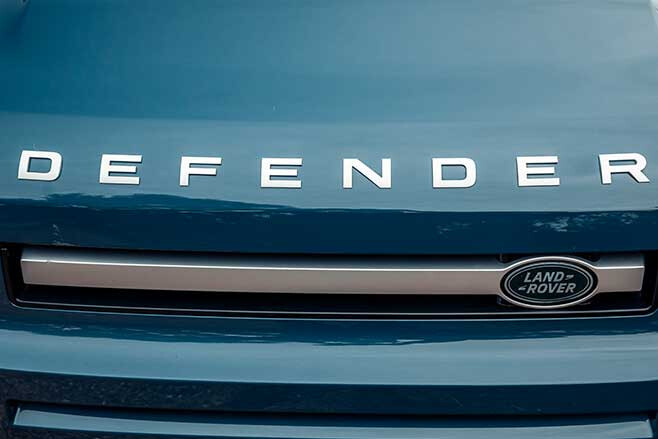
The performance is enticing and the Defender recorded the highest fuel use on our test week at 19.3L/100km, meaning we were looking to refill the 90-litre tank after two days of High Country driving.
ON ROAD RIDE & HANDLING
THE Defender features height adjustable, fully independent suspension to attempt to give the driver the best of both worlds – on and off road. The on-road drive is exciting and the Landy hunkers down over its 20-inch tyres and makes the most of the engine’s performance. It’s still a big, heavy 4×4 wagon, but its dynamics defy its mass.
OPINION: Is the new Defender a worthy replacement?
The standard 255/60-20 highway tyres still have a pretty good sidewall so the ride isn’t as bad as you might imagine on 20-inch wheels. Overall it’s firm without being uncomfortable and supple enough to soak up the bumps and undulations.
OFF-ROAD
DEFENDER’S Terrain Response 2 system is now configurable so you can set it up to your liking, but it also has an Auto setting so you can forget about it altogether. That’s a good thing as the settings are now in a menu and not as easy to access as they were when they were on a simple dial.

We’ve found the easiest way to get the best off-road performance out of the Defender is to simply push the button to put it in low range, and the button to turn off hill descent control, raise the suspension to its off-road height and away you go. In this mode the Defender feels unstoppable and it walked up our hill climb without raising much dust. Once you get out on the rocky trails, the higher suspension setting can feel a bit harsh and tends to top out the dampeners over bumps, but you can drop it back down one setting if that bothers you.
CABIN AND ACCOMMODATION
THE inside of the Defender is spacious, accommodating and well-equipped. Even without carpet on the floors it felt luxurious in this company but in the context of the modern Land Rover model range, it is far from it. It has everything you need and plenty more making the Defender one of the best long-distance touring vehicles.
The rear cargo area is spacious with room for all your gear, a couple of decent tie-down points and a 12-volt power outlet. The seats fold flat to increase cargo space and the 110 is available as either a 5, 6 or 7-seater.
PRACTICALITIES
THE Defender is one of the few 4×4 wagons to have a 3500kg towing capacity to match the utes, and the 110 P400 has around 880kg payload depending on the features fitted.
The smallest wheel rim you can fit over the brakes on the P400 variant is a 19-incher limiting your tyre choices. Buyers wanting off-road rubber would be best to opt for the 20s as they offer more tyre options. Diesel Defenders can be fitted with 18s because of the smaller rear brakes.
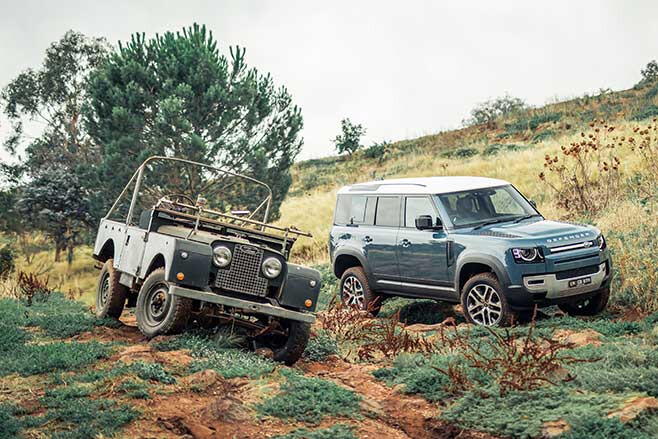
There is a range of factory accessories available for the Defender including an intake snorkel and a winch compatible front bar, but we are yet to see much for it from the aftermarket.
SPECS
ENGINE: 3.0-litre IL6 bi-charge petrol* MAX POWER: 294kW at 5500rpm MAX TORQUE: 550Nm at 2000 to 5000rpm GEARBOX: Eight-speed automatic 4X4 SYSTEM: Dual-range full-time CRAWL RATIO: 44.3:1 WHEEL/TYRE: 255/60R20 113Q KERB WEIGHT: 2286kg GVM: 3165kg PAYLOAD: 879kg TOWING CAPACITY: 3500kg GCM: 6665kg FUEL TANK CAPACITY: 90 litres ADR FUEL CLAIM: 9.9L/100km GROUND CLEARANCE: 291mm APPROACH ANGLE: 38⁰ RAMPOVER ANGLE: 28⁰ DEPARTURE ANGLE: 40⁰ WADING DEPTH: 900mm

